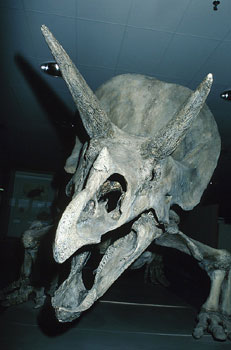A new study suggests that the flying creatures of those who ruled the skies of the country 100 million years ago were the largest that ever existed on Earth

Pterosaur bone fragments have been found in Mexico, Jordan, Israel and Brazil
The prehistoric world is full of large creatures, from T-Rex to giant dinosaurs that lived in lakes. But those who ruled the skies of the country 100 million years ago were pterosaurs - huge flying reptiles with a wingspan like that of a Cessna plane. This is what Dr. David Martil from Plymouth University in England found out.
In a lecture he gave on Wednesday at the "Science Festival" of the "British Association for the Advancement of Science", which is being held in Dublin, Ireland, Martil said that these are the "largest flying creatures that have ever existed on Earth", and they are also the first vertebrates to learn to fly. The pterosaurs have been known to scientists for several years. However, bone fragments discovered, among others in Israel, show that the creatures were very large, much larger than scientists had thought until now. "According to the evidence provided by the bones, their wingspan reached 18 meters," said Dr. Martil.
Their wings were composed of a thin membrane only half a millimeter thick - like a bat's wing. Dr. Martil is excited when he talks about the pterosaur, describing "a beautiful engineering structure". According to him, "Their wings were thin, almost hollow, and composed of special microscopic structures of thin layers that connect to the shoulder."
The first evidence of the existence of these reptiles was found in 1971, when pterosaur footprints were discovered in Mexico. According to Dr. Martil, these initial findings taught about creatures with a wingspan of nine to ten meters. But since then, additional bone fragments have been found - in Jordan, Israel and Brazil - which show that their size was twice as large as previously thought. Their necks reached a length of about three meters, which connected to the head, which apparently reached a length of two meters. Its large head allowed the pterosaur, apparently, to fish for its prey without having to get dangerously close to the water.
Martil says that he was able to prove that the wings of the pterosaurs were actually attached to the lower part of the body, and not, like most birds, to the upper part of the body. This allowed them to enjoy the warm air currents, with which they could continue to fly for longer periods of time.
The last pterosaur went extinct 65 million years ago. "Since there is no species that continued the lineage of giant flying animals, we can only learn about them from fossils," said Dr. Martil. In the evolutionary world, reptiles are placed between the dinosaurs and crocodiles and alligators. Recently discovered pterosaur eggs with embryos show that unlike modern-day bird chicks, which cannot fly until the end of their development, these reptiles could fly from birth. "It was an extraordinary achievement, because the wings would have grown from a length of a few centimeters to several meters, without this affecting the animal's ability to fly, they could fly right from the beginning of their lives."
They spent most of their time in flight. They hovered in the air and used their large mouths to take in liquids and food while flying. On the ground they folded their wings behind their backs and walked on legs that were actually three large claws and a spherical heel.
They knew the dinosaurs.
